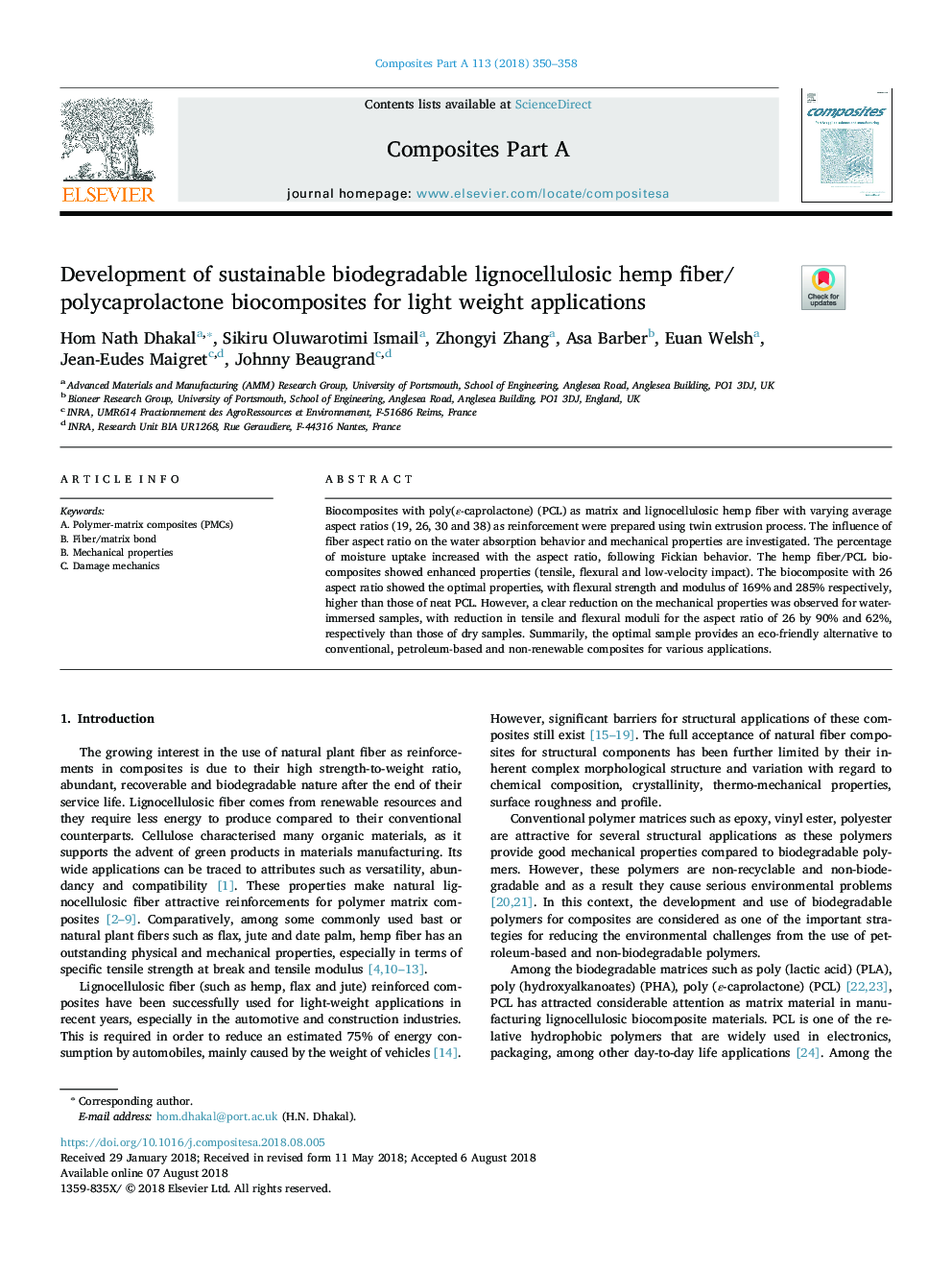| Article ID | Journal | Published Year | Pages | File Type |
|---|---|---|---|---|
| 7889350 | Composites Part A: Applied Science and Manufacturing | 2018 | 9 Pages |
Abstract
Biocomposites with poly(ε-caprolactone) (PCL) as matrix and lignocellulosic hemp fiber with varying average aspect ratios (19, 26, 30 and 38) as reinforcement were prepared using twin extrusion process. The influence of fiber aspect ratio on the water absorption behavior and mechanical properties are investigated. The percentage of moisture uptake increased with the aspect ratio, following Fickian behavior. The hemp fiber/PCL biocomposites showed enhanced properties (tensile, flexural and low-velocity impact). The biocomposite with 26 aspect ratio showed the optimal properties, with flexural strength and modulus of 169% and 285% respectively, higher than those of neat PCL. However, a clear reduction on the mechanical properties was observed for water-immersed samples, with reduction in tensile and flexural moduli for the aspect ratio of 26 by 90% and 62%, respectively than those of dry samples. Summarily, the optimal sample provides an eco-friendly alternative to conventional, petroleum-based and non-renewable composites for various applications.
Keywords
Related Topics
Physical Sciences and Engineering
Materials Science
Ceramics and Composites
Authors
Hom Nath Dhakal, Sikiru Oluwarotimi Ismail, Zhongyi Zhang, Asa Barber, Euan Welsh, Jean-Eudes Maigret, Johnny Beaugrand,
